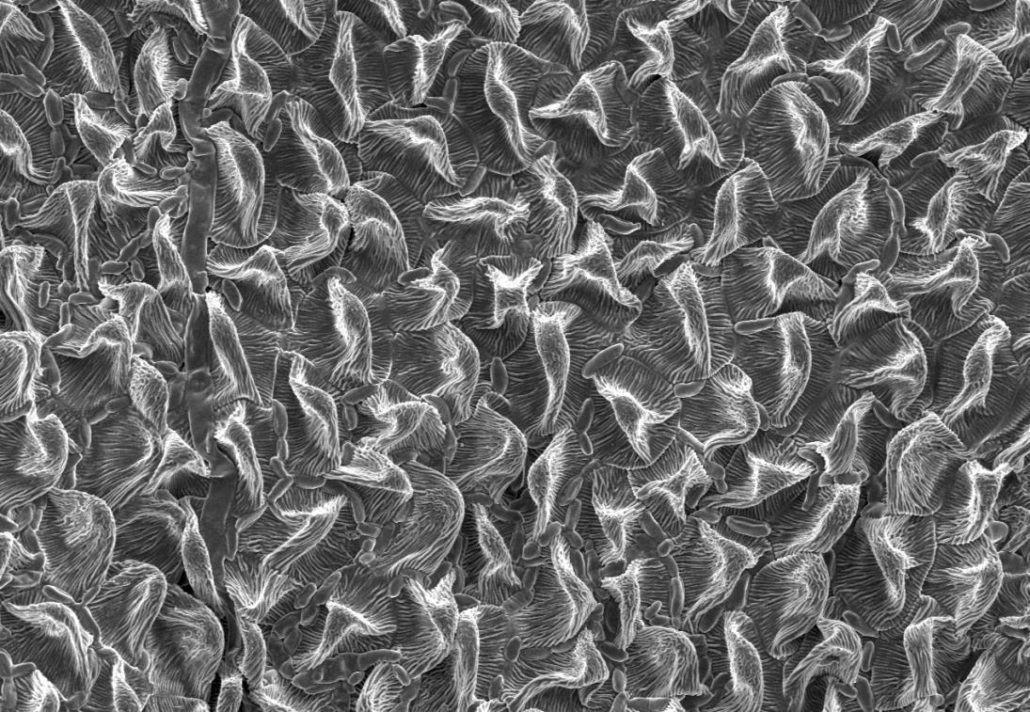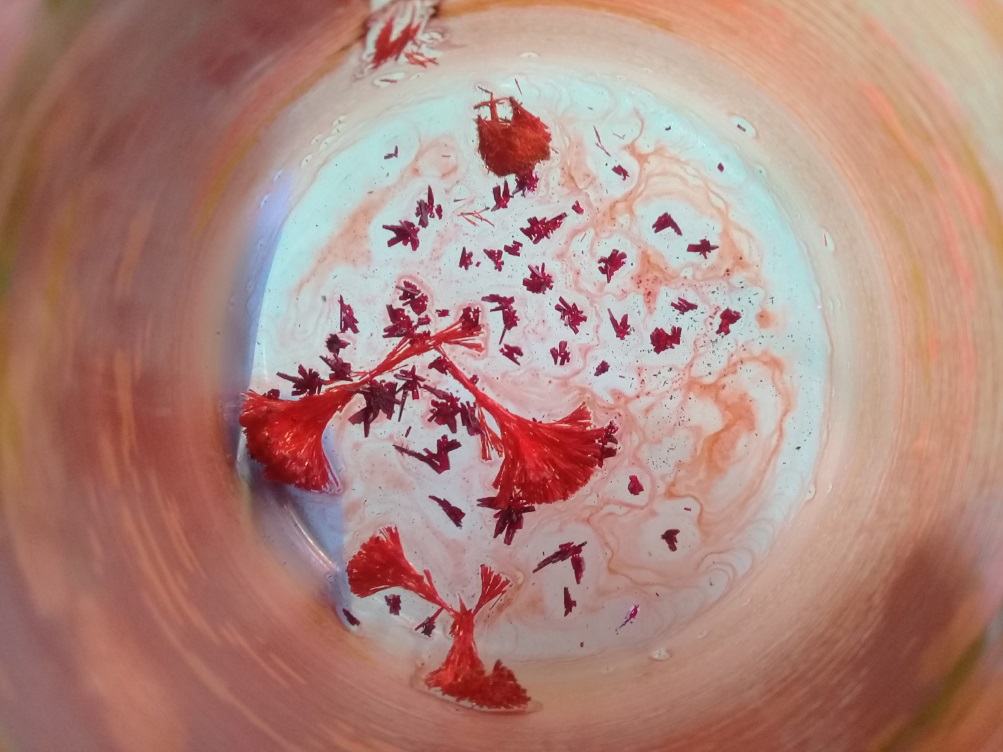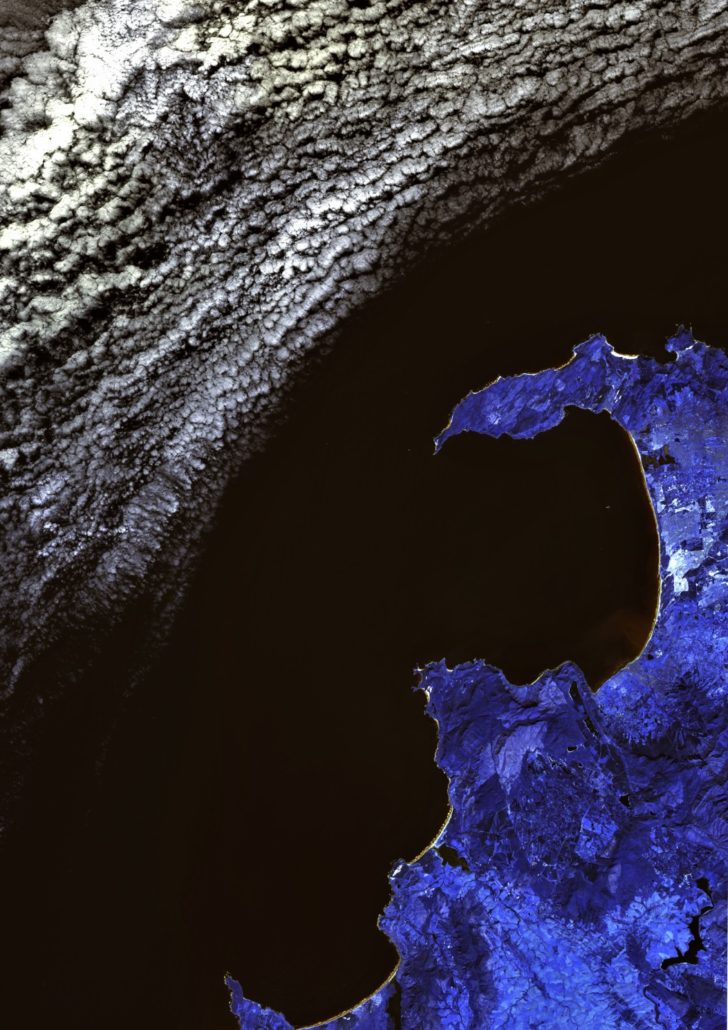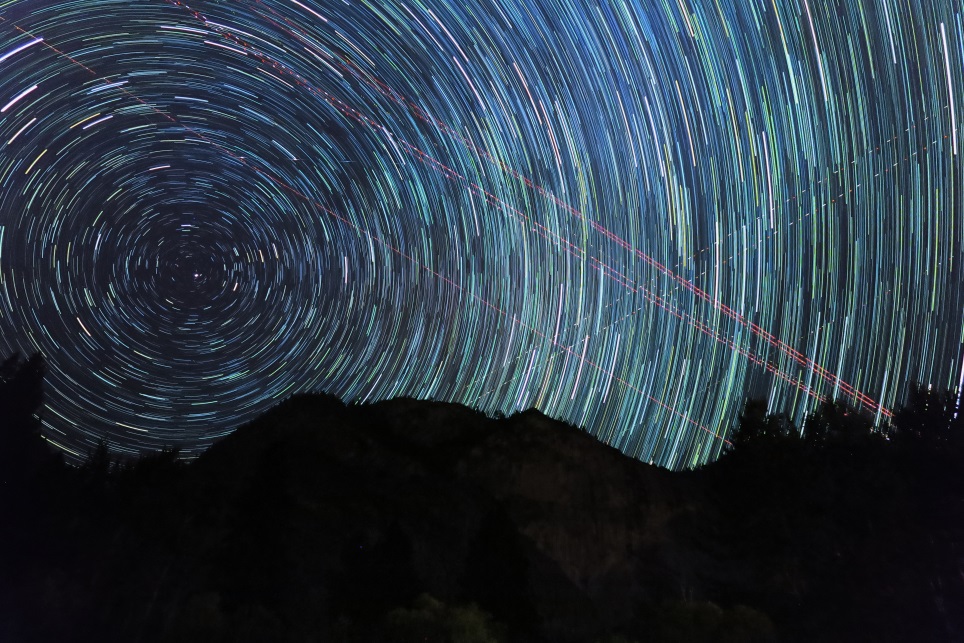Science as Art
Prize Winners
First Place
 Photographer: Dr Lydia-Marie Joubert
Photographer: Dr Lydia-Marie Joubert
Title: Microscopic Escher
This photo shows the cellular patterns of rose petals. Floral petals were imaged live, and treated with Ionic Liquid to make them conductive for electron microscopic imaging. The photograph was taken with a scanning electron microscope. Closer inspection reveals an abundance of microscopic life on the rose petal.
Second Place
 Photographer: Rowan Keith Jordaan
Photographer: Rowan Keith Jordaan
Title: Serendipity
Marion Island is situated in the infamous ‘roaring forties’ and is habited only by a small overwintering team of researchers and base personnel who conduct research on various fauna and flora that habit the island. Killer whales are the apex predators of Marion Island. Killer whale presence however varies throughout the year, with presence at the island peaking during the summer months, the breeding season for most animals and when food (penguins and young elephant seals) is readily available. Very few killer whales are present during the winter months and where these animals go during this time remains a mystery. Being a volcanic island which has steep cliffs and oceanic drop-offs, killer whales are frequently seen very close to shore. In this photo, an adult female is seen with a very young calf. Both are cruising in crystal clear water which makes sightings of these magnificent creatures very intimate but more so when there is a young, playful calf present!
Commended
 Photographer: Nobuhle Ndebele
Photographer: Nobuhle Ndebele
Title: Science in a flower
The image attached is of a compound that I synthesized in the lab. The compound is a boron-dipyrromethene, often abbreviated as BODIPY, a type of fluorescent dye. The compound was synthesized for my master’s research which aims to create a continuous glucose sensor using fluorescent dyes. The compound was made and purified through column chromatography using silica gel and the appropriate solvents. The pure product was dried under vacuum in a fume hood and the dry sample was re-dispersed in a solution of petroleum ether and ethyl acetate at a volumetric ratio of 9:1 which resulted in the image presented. Upon re-dispersion, the compound formed crystals and the image was captured. The picture presented is an aerial view of the crystals in a glass beaker. The image depicts red/orange “flowers” and a few wilted petals around the flowers and shades of orange lines around the edges of the beaker. The lighter shades of orange at the bottom of the beaker make it seem as if the flowers are dissolving in solution.
 Photographer: Samantha Brauteseth
Photographer: Samantha Brauteseth
Title: Delicate
As a photographer I am constantly taking in my surroundings and observing the environment around me. Sometimes I challenge myself to find beautiful forms and compositions existing within nature to photograph. I came upon this dried little plant- only four centimetres in height, with stems so thin they felt like hair. I cannot believe that something so delicate and fragile can exist in the rough elements of the natural world. This delicate plant, upon completing its life cycle and releasing its seeds into the environment, was simply blowing in the wind. Hardly noticed and more likely trampled upon, this unassuming beauty is so perfect in form and shape. Each dropping steam, so fine and fragile, supporting life within each seed pod- makes this little plant look like a sculptured form- not unlike many art pieces I see at the university where I lecture. It is hard to believe that the scientific process of life to seed can take place within such a tiny, fragile form. What a find- what a celebration of life!
 Photographer: Mayur Prag
Photographer: Mayur Prag
Title: Sticky trap
This strange leaf comes from the Cape Sundew, so named due to the dew like droplets on the tentacles protruding from the leaves. Its appealing appearance and name disguise the fact that the dew is in fact a sticky mucilage that is designed to trap small insects that land on it. This plant is indeed carnivorous. Once the prey is stuck, the plant is able to curl its leaves by thigomatropism to effectively trap the helpless bug. Even the individual tentacles can move to further entrap the prey. The plant can take up to six hours to slowly digest its victims which go on to provide valuable nutrients to the plants which often grow in poor soil conditions. Fascinatingly, the plants are even able to distinguish between prey and other matter such as leaves or debris that have been trapped on the tentacles and will release these so as not to waste energy. This particular species is Drosera capensis, one of the many sundew species that are particularly numerous on the cape peninsula and is yet another one of the many wonders of the Cape Floral Kingdom.
 Photographer: Zander Venter
Photographer: Zander Venter
Title: Silence before the storm
The Cape peninsula stands out cool and collected in the face of an oncoming cold front. It is at the collision of two air masses where cold fronts occur. Cold subsiding air meets warm rising air causing clouds to form along a straight line. This weather system is a dominant phenomenon during Cape winters, bringing much needed rain to the interior of the country. Satellite imagery gives scientists the ability to collect data about the temperatures and moisture levels in the atmosphere prior to events like this one. These can be fed into machine learning models which are then able to predict when such cold fronts are likely to occur in the future. This is weather forecasting. It gives us knowledge of what weather systems are approaching and prevents us from being left ignorant in the silence before the storm.
 Photographer: Crossing the blue
Photographer: Crossing the blue
Title: Luan Swart
This image shows how the stars relatively and concentrically move around the North Pole, and how the stars inline of the axis of the Earth basically look like they are standing still. This phenomenon happens because relative to where you stand on Earth you rotate different diametrical distances as the Earth rotates, the closer you are to the poles the smaller the diametrical distance you cover becomes. If you move away from the poles towards the equator, the diametrical distance you cover increases. When looking up at the stars they move according to the same point of reference. This means that the axis is stationary (and also the centre of the circles). As you move away from the axis, the star trails become longer and create concentric circles around the centre. The easiest way to view this is to think that the stars in the centre of the circle, which barely moved, were photographed just as long as the stars on the far edge of the photo, which moved a large distance. The red lines crossing through the image are airplanes on their respective routes around the globe, now taking into account the relative movement of the earth around its own axis and the curvature of the earth, these airplanes would never have been able to fly in such accurate directions (observe how perfectly parallel the lines are to each other) without the invention of the GPS.
Click here to read more about the competition.
*The copyright of the photographs entered into the competition remains with the photographer. The photographs may be published in connection with the SA Science Lens competition, acknowledging SAASTA, the SA Science Lens competition and the photographer. For enquiries regarding permission to use photos, please contact Joanne Riley, Science Editor at SAASTA, at joanne@saasta.ac.za or 012 392 9349.

 Joanne Riley
Joanne Riley The South Africa Agency for Science and Technology Advancement (SAASTA) is a business unit of the
The South Africa Agency for Science and Technology Advancement (SAASTA) is a business unit of the 